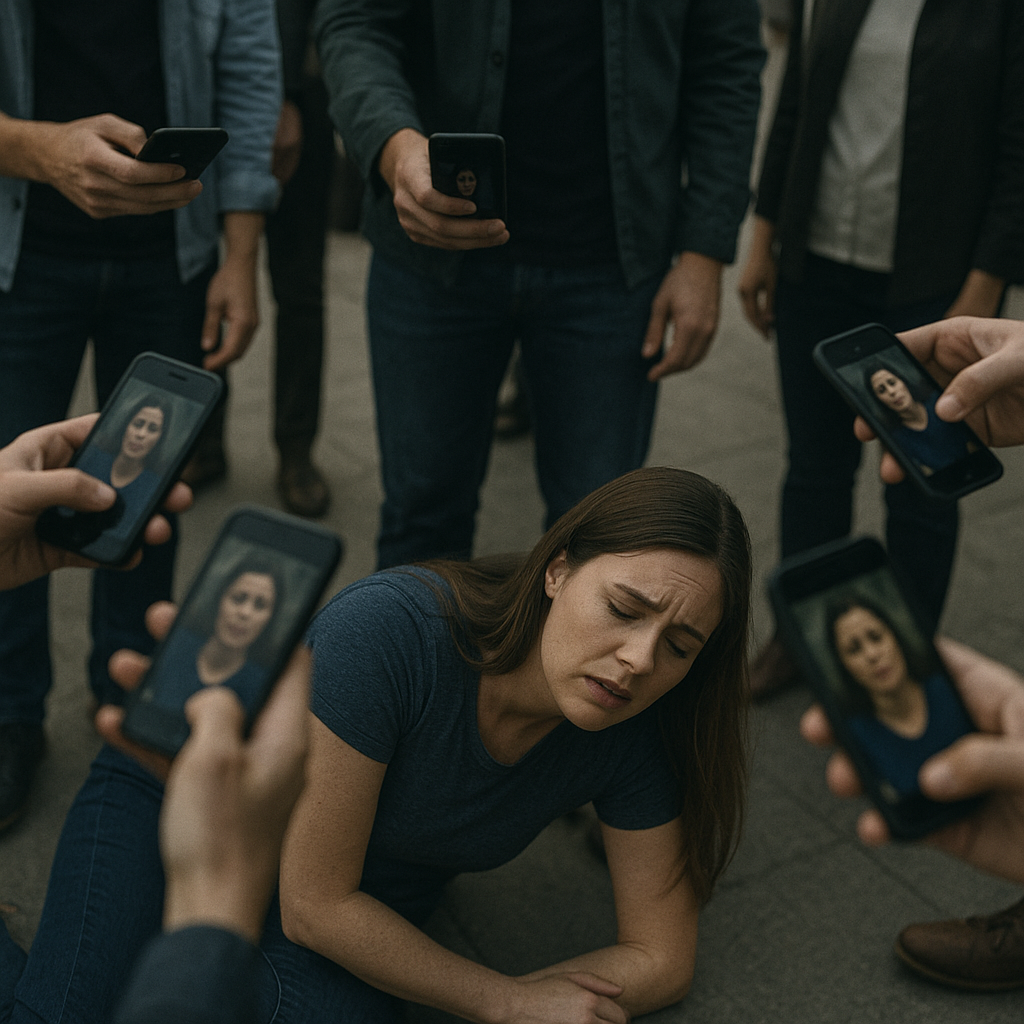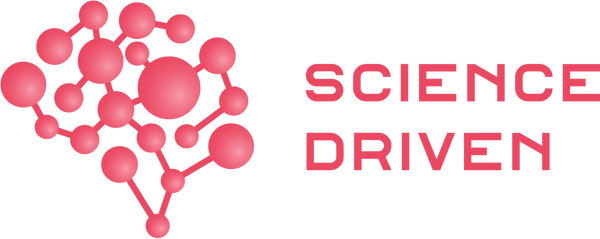
Why don’t we act when we see someone being assaulted?
Mike MunayShare
The Bystander Effect: The science of watching and doing nothing
Imagine running in the dark, your throat cracking from screaming, and your every word crashing against walls that return only silence. There are lights in the windows, footsteps held back behind doors, eyes that look and then turn away. You are surrounded by people, yet you are alone. There are no hands reaching out, no voices answering. The crowd is a wall, and all it returns is indifference.
That's the cruelest scenario: not the attack itself, but the feeling that your community, your people, the very people who should be supporting you, have turned their backs on you. It's an abandonment disguised as neutrality, a tacit pact not to intervene. There are no cartoonish villains or obvious executioners; there are neighbors, passersby, coworkers. Human beings who decide, collectively and unconsciously, that the best course of action is to do nothing.
This isn't an exercise in macabre imagination. It's happened thousands of times throughout history, unfortunately, but the most famous case occurred in New York in 1964.
Kitty Genovese, 28, was stabbed in the street and screamed for help for over half an hour. Several dozen neighbors heard her pleas. Some turned on their apartment lights, others watched from the shadows. Most did nothing. When the police finally arrived, Kitty lay dying. She died surrounded by people who didn't attack her, but were complicit through inaction. Guilty witnesses.
Genovese's murder became a symbol of a communal injustice that is more devastating than physical injury: the betrayal of the group, the failure of the human instinct to care. And with it was born the concept that still troubles social psychology today: the bystander effect.
That event became a case study. Psychologists such as John Darley and Bibb Latané used it as a starting point for a series of experiments that would reveal something disturbing: the presence of more witnesses doesn't increase helping. It reduces it.
The paradox of the multitude
The phenomenon is called the bystander effect. It demonstrates that responsibility, when shared, is diluted until it disappears. The instinctive thought would be the opposite: the more witnesses there are, the greater the likelihood that someone will act. Mathematical logic would suggest that in a group of fifty people, at least one should react. And yet, psychology shows the opposite.
If I'm alone and someone falls to the floor, my reaction is immediate: I know it's my fault. But if I'm in a crowded car and someone collapses, a perverse logic sets in: "There must be someone more capable, someone will already be calling, I won't be the one who makes a mistake." The crowd multiplies the attention, but it divides the responsibility. Each individual convinces themselves that someone else will do it, and that shared conviction turns into collective paralysis.
Darley and Latané proved this in 1968.
In their most famous experiment, they tricked several students into believing a classmate was suffering an epileptic seizure. When an individual thought they were the only witness, 85% of them rushed to help. But if they believed there were other people listening, the proportion plummeted.
That's the core of the paradox: the more of us there are, the less we do. And the most disturbing thing is that the mechanism doesn't require active cruelty, only the comfort of silence.
The mechanism becomes even more perverse with three psychological gears:
- Diffusion of responsibility: The more of us there are, the less I feel it's my responsibility.
- Pluralistic ignorance: I look around and, since no one reacts, I conclude that it can't be that serious.
- Fear of social evaluation: the fear of being wrong, exaggerating, or making a fool of myself weighs more than the pain of others.
This combination transforms the group's strength into moral weakness. The terrible thing is that it doesn't require malice, only passivity. You just have to look around, see that others are doing nothing, and sink into the same inaction. The cruelty lies not in the act of an aggressor, but in the collective emptiness that allows it to continue.
Scientific studies on the bystander effect
Social psychology began to dissect it with a scientific scalpel after the murder of Kitty Genovese, and what she found was as consistent as it was uncomfortable.
The epileptic seizure experiment (1968)
John Darley and Bibb Latané designed a study that has become a textbook classic. They convened university students under the pretext of discussing personal problems via intercom. During the rehearsal, one of the supposed participants (an actor hired for the purpose) began simulating an epileptic seizure, babbling and desperately calling for help.
The results were devastating:
- When a subject believed he was the only witness, 85% went to help him immediately.
- If they thought there were two other people listening, the figure dropped to 62%.
- In groups of five witnesses, only 31% reacted.
The urgency of the situation was the same. The only difference was the size of the group.
Smoke in the Room (1968)
In another experiment, Darley and Latané placed students in a room to complete a questionnaire. After a few minutes, smoke began to seep under a door. The scene resembled a bad omen: an impending fire. When the students were alone, 75% quickly left the room to warn someone. But when they were accompanied by others who feigned indifference, the response plummeted: barely 10% took any action. Most continued writing, surrounded by smoke, trapped in the validation of the seemingly calm group.
The effect is a reality
The evidence isn't limited to the laboratory. A meta-analysis published in American Psychologist in 2011 by Fischer and colleagues reviewed more than 50 years of studies and thousands of cases. Their conclusion was clear: the bystander effect exists, albeit with nuances. In ambiguous situations, the number of witnesses reduces intervention. But when the threat is clear and direct, the presence of more people can in some cases facilitate assistance, provided someone first breaks the inertia of silence.
The reflection of a sick society
The bystander effect is no longer a concept confined to psychology textbooks: it is an x-ray of our present.
Just look around. Today, in the digital age, indifference has become more sophisticated: not only do we stop acting, but we turn tragedy into a spectacle. A man collapses in the street, and instead of hands to help him, he's surrounded by cell phones recording him. An assault occurs on the subway, and witnesses prefer to capture it on video rather than stop it. The camera has become an excuse: recording replaces intervention, as if immortalizing horror were equivalent to preventing it. As if it served to justify doing something and thus avoid blame.
The same silence creeps into homes. Neighbors hear banging and screaming behind the walls, but turn up the television to drown them out. Friends suspect abuse but prefer not to "bother where they don't belong." In offices and businesses, the scene is repeated in a different guise: a worker humiliated in public, harassed by a boss, and the rest staring at the floor, muttering privately but not daring to stop the violence.
The aggression is sustained by the passive chorus of those who choose to remain silent.
And on a global scale, cruelty is multiplying. Wars broadcast live, millions of people displaced, civilians massacred… and yet, everyday life remains the same. We are outraged with a click, we share flags on social media, but conflicts drag on for years. The entire world watches, discusses, comments… and meanwhile, the bodies pile up.
The paradox of the multitude today is called hyperconnected humanity. There have never been so many ways to see, record, comment, and denounce. And yet, we have never been so efficient at not intervening. Silence is no longer absence: it is the noise of notifications, likes, and views that mask inaction.
The bystander effect isn't an external monster, but a statistic that includes us. It doesn't demand malice, only comfort. It doesn't demand weapons, only indifference. Just watch, comment, record. The next time you see someone asking for help, ask yourself if you'll be just another in the mass of people watching, recording, and passing by. Social science has already predicted your answer.
And that is the hardest blow: that the enemy is not the violence of others, but our own collective passivity.
Bibliographic references
- Darley, J. M., & Latané, B. (1968). Bystander intervention in emergencies: Diffusion of responsibility. Journal of Personality and Social Psychology, 8(4), 377–383. https://doi.org/10.1037/h0025589
- Latané, B., & Darley, J. M. (1970). The unresponsive bystander: Why doesn’t he help? New York: Appleton-Century-Crofts.
- Latané, B., & Rodin, J. (1969). A lady in distress: Inhibiting effects of friends and strangers on bystander intervention. Journal of Experimental Social Psychology, 5(2), 189–202. https://doi.org/10.1016/0022-1031(69)90046-8
- Fischer, P., Krueger, J. I., Greitemeyer, T., Vogrincic, C., Kastenmüller, A., Frey, D., ... & Kainbacher, M. (2011). The bystander-effect: A meta-analytic review on bystander intervention in dangerous and non-dangerous emergencies. Psychological Bulletin, 137(4), 517–537. https://doi.org/10.1037/a0023304
- Levine, M., & Crowther, S. (2008). The responsive bystander: How social group membership and group size can encourage as well as inhibit bystander intervention. Journal of Personality and Social Psychology, 95(6), 1429–1439. https://doi.org/10.1037/a0012634

2 comments
Muy claro ! .Me parece increíble como hoy en día normalizamos situaciones que no lo son .
Increíble cómo se relaciona un suceso psicólogo que lleva estudiándose años con la situación actual y lo perjudicial de las redes sociales, recomendado para concienciar a las personas!